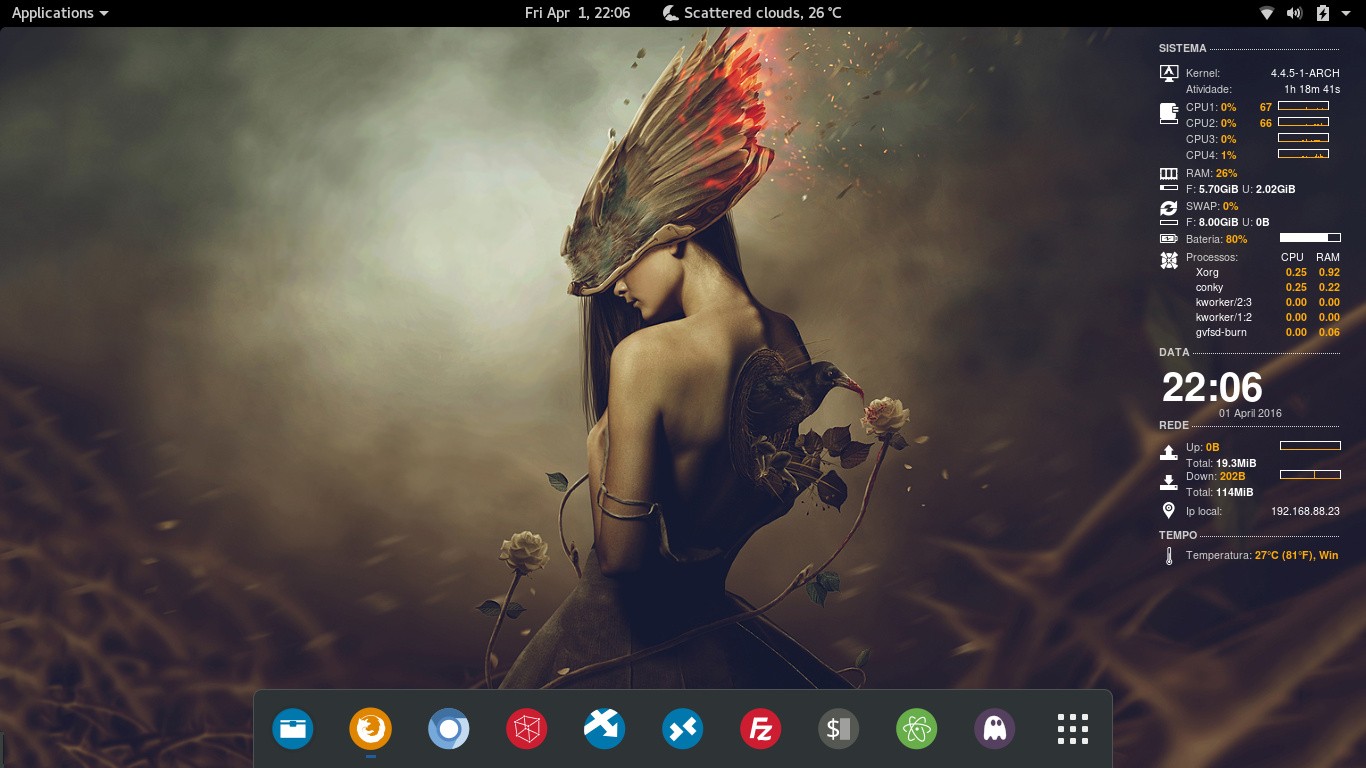
- #ARCH LINUX INSTALLATION INSTALL#
- #ARCH LINUX INSTALLATION CODE#
- #ARCH LINUX INSTALLATION ISO#
- #ARCH LINUX INSTALLATION DOWNLOAD#
To set the keyboard layout, pass a corresponding file name to loadkeys(1), omitting path and file extension. See pkglist.x86_64.txt for a list of the packages included in the installation medium. To edit configuration files, mcedit(1), nano and vim are available. To switch to a different console-for example, to view this guide with Lynx alongside the installation-use the Alt+ arrow shortcut. You will be logged in on the first virtual console as the root user, and presented with a Zsh shell prompt.See HiDPI#Linux console (tty) for a detailed explanation. For better readability on HiDPI screens-when they are not already recognized as such-using fbcon=font:TER16x32 can help. A common example of manually defined boot parameter would be the font size.

Use respectively e or Tab to enter the boot parameters. The installation image uses GRUB for UEFI and syslinux for BIOS booting.$ pacman-key -v archlinux- version-x86_64.iso.sig $ gpg -keyserver-options auto-key-retrieve -verify archlinux- version-x86_64.iso.sigĪlternatively, from an existing Arch Linux installation run:
#ARCH LINUX INSTALLATION ISO#
On a system with GnuPG installed, do this by downloading the ISO PGP signature ( under Checksums in the page Download) to the ISO directory, and verifying it with: It is recommended to verify the image signature before use, especially when downloading from an HTTP mirror, where downloads are generally prone to be intercepted to serve malicious images.
#ARCH LINUX INSTALLATION DOWNLOAD#
Visit the Download page and, depending on how you want to boot, acquire the ISO file or a netboot image, and the respective GnuPG signature. Pre-installation Acquire an installation image As the installation process needs to retrieve packages from a remote repository, this guide assumes a working internet connection is available. A basic installation should take less than 2 GiB of disk space. For interactive help, the IRC channel and the forums are also available.Īrch Linux should run on any x86_64-compatible machine with a minimum of 512 MiB RAM, though more memory is needed to boot the live system for installation. For more detailed instructions, see the respective ArchWiki articles or the various programs' man pages, both linked from this guide. This guide is kept concise and you are advised to follow the instructions in the presented order per section.
#ARCH LINUX INSTALLATION CODE#
In particular, code examples may contain placeholders (formatted in italics) that must be replaced manually. For conventions used in this document, see Help:Reading. For alternative means of installation, see Category:Installation process.īefore installing, it would be advised to view the FAQ.

#ARCH LINUX INSTALLATION INSTALL#
The installation medium provides accessibility features which are described on the page Install Arch Linux with accessibility options. Sq verify -signer-file release-key.pgp -detached archlinux-2023.08.01-x86_64.iso.sig archlinux-2023.08.01-x86_64.This document is a guide for installing Arch Linux using the live system booted from an installation medium made from an official installation image. With this key the signature can be verified like this: The release signing key can be downloaded with WKD: PleaseĮnsure the download image matches the checksum from the sha256sums.txt orī2sums.txt file in the same directory as the image. In addition to the BitTorrent links above, install images can also beĭownloaded via HTTP from the mirror sites listed below. Official virtual machine images are available for download on our GitLab instance, more information is available in the README. You can run the image with the following command: docker run -it archlinux VM images The official Docker image is available on Docker Hub. You can bootstrap the image with the following commands: vagrant init archlinux/archlinux vagrant up Docker image Vagrant images for libvirt and virtualbox are available on the Vagrant Cloud.

If you have a wired connection, you can boot the latest release directly over the network. If you can spare the bytes, please leave the client open after yourĭownload is finished, so you can seed it back to others.Ī WebSeed capable client is recommended for fastest download speeds. You may be looking forĪn updated mirrorlist instead. If you are an existing Arch user, there is no need to download a new ISO It is intended for new installations only an existing Arch Linux system Or be directly written to a USB flash drive. The image can be burned to a CD, mounted as an ISO file,


 0 kommentar(er)
0 kommentar(er)
